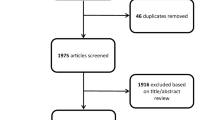Abstract
Central nervous system (CNS) lesions that are discovered incidentally when imaging children for problems that were unrelated to the detected lesion pose a dilemma to physicians. Because there are few data on the outcome of such cases, we retrospectively reviewed the clinical course of a group of children followed at our institution with brain lesions found incidentally on neuro-imaging. A database of all children with brain lesions followed at the University of Rochester medical center from 2000 to 2010 was reviewed. Data were obtained regarding presentation, magnetic resonance imaging (MRI) features, treatment, progression-free survival, and overall survival of children with brain lesions found incidentally. Of the 244 children with brain lesions seen over this time period, 21 (8.6%) were found to have incidentally discovered brain lesions. Of these 21 children, 12 (57%) underwent surgical resection of their brain lesions. Ten patients (48%) had symptoms considered to be unassociated with the detected lesion. Lesions were found in the cerebellum (n = 7, 33%), midline (n = 5, 24%), and cerebrum (n = 9, 43%). All lesions were ≤5 cm in diameter. Eight patients (38%) had surgery at presentation, one because of imaging features suspicious for a posterior fossae ependymoma, and the seven others because of location in the posterior fossae or brain stem. Of the remaining 13 patients, five had progression of disease on serial MRI scans: four underwent surgery and the fifth was monitored and remained stable after the initial progression stabilized. Nine of the ten patients (90%) with posterior fossae lesions underwent surgery, while only three of 11 with supratentorial lesions underwent surgery (27%) (P = 0.006). The progression free survival was 94% at 12 months (95% CI 65–99%) and 71% at 24 months (95% CI 39–88%). At a median follow-up of 32 months, the overall survival was 100%. Incidentally detected CNS lesions are usually small. The outcome for children with such lesions is excellent. Close monitoring of these patients with serial MRIs may be a safe alternative to immediate biopsy and/or resection for select patients.



Similar content being viewed by others
References
Belay SNGaB (2008) Intracranial incidental findings on brain MR images in a pediatric neurology practice: a retrospective study. J Neurol Sci 264(1–2):34–37
Brian S. Kim JI, Kaplan RT, Reiss A, Atlas SW (2002) Incidental findings on pediatric MR images of the brain. Am J Neuroradiol 23:1674–1677
Vernooij MW, Ikram MA, Tanghe HL, Vincent AJ, Hofman A, Krestin GP, Niessen WJ, Breteler MM, van der Lugt A (2007) Incidental findings on brain MRI in the general population. N Engl J Med 357(18):1821–1828. doi:357/18/1821[pii]10.1056/NEJMoa070972
Morris Z, Whiteley WN, Longstreth WT Jr, Weber F, Lee YC, Tsushima Y, Alphs H, Ladd SC, Warlow C, Wardlaw JM, Al-Shahi Salman R (2009) Incidental findings on brain magnetic resonance imaging: systematic review and meta-analysis. BMJ 339:b3016
Ashley WW Jr, Narayan P, Park TS, Tu PH, Perry A, Leonard JR (2005) Incidental pediatric intraparenchymal xanthogranuloma: case report and review of the literature. J Neurosurg 102(3 Suppl):307–310. doi:10.3171/ped.2005.102.3.0307
Fitch DS, Eckner JT (2009) Brain mass incidentally noticed after minor head injury. Am J Phys Med Rehabil 88 (3):259. doi:10.1097/PHM.0b013e318198b70]
Takeda N, Fujita K, Katayama S, Uchihashi Y, Okamura Y, Nigami H, Hashimoto K, Kohmura E (2004) Germinoma of the basal ganglia. An 8 year asymptomatic history after detection of abnormality on CT. Pediatr Neurosurg 40 (6):306-311. doi:PNE2004040006306
Pirotte BJ, Lubansu A, Massager N, Wikler D, Van Bogaert P, Levivier M, Brotchi J, Goldman S (2010) Clinical interest of integrating positron emission tomography imaging in the workup of 55 children with incidentally diagnosed brain lesions. J Neurosurg Pediatr 5(5):479–485. doi:10.3171/2010.1.PEDS08336
Acknowledgment
Hongyue Wang for her assistance with creation of the Kaplan–Meier curve. Jennifer Mulberry, MD, for her review of cases.
Author information
Authors and Affiliations
Corresponding author
Rights and permissions
About this article
Cite this article
Bredlau, AL., Constine, L.S., Silberstein, H.J. et al. Incidental brain lesions in children: to treat or not to treat?. J Neurooncol 106, 589–594 (2012). https://doi.org/10.1007/s11060-011-0695-1
Received:
Accepted:
Published:
Issue Date:
DOI: https://doi.org/10.1007/s11060-011-0695-1




